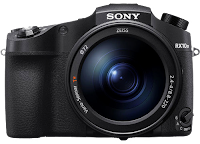An absolutely bonkers sub 2.5lb laptop with 2k of colour corrected display with 100% colour gamut. It folds away to almost nothing, offers the power needed to make high resolution photo and video edits on the road and even converts to a tablet for digital sketching.
$1899
$2199
Simply the highest photo quality 360 camera you can get. A massive 1 inch sensor means good low light, RAW shooting, a programmable Android based OS that lets you push the limits of this emerging format by creating my own plugins.
I prefer photography to video so the Z1 is the weapon of choice when it comes to 360 photography. The only thing it can't do is rough and tumble, but I have a plan for that.
$1349
.jpg) |
| I like a good 360 photograph (not so big on the videos), but the old ThetaSC isn't great in low light conditions, Even a cloudy day can make things muddy. |
 |
| You can make some interesting compositional choices with a 360 camera that conventional photography would struggle with. A better still 360 camera would let me explore this further. |
The rough and tumble option. If I'm riding, in the rain or filming under water, the X3 does the trick and it's still in the shape I prefer for 360 cameras (blocky GoPros are awkward and not so aerodynamic). The Insta360 cameras are tough and this new one has such a good sensor that it approaches the Theta Z1 for low light and detail pickup. So close in fact that I think I'd just go with this new X3 and shelf the stirng of Thetas that got me into 360 photography to begin with. Ricoh just doesn't seem that intent on pushing the genre anymore.
$600 standalone, $713 with motorcycle gubbins
I got an iPhone 13 last year and the camera on it is good - so good that I found myself leaving the DSLR behind because, for candid snaps, the iPhone is more than up to the job. As good as it is, I'm wishing I'd gone a bit further and gotten a 14 pro with extra lens and that bit more photographic range. I'm still struggling with adapting to iOS after owning an Android from the very beginning, but I'd stick it out for the software integration and quality on the iPhone (Apple's stance on user privacy is appealing too).
$1549
This might all seem pretty expensive (photography isn't a cheap hobby), but when a single pro 400mm lens costs you about ten grand, this entire $7665 set offers much more flexibility with a powerful all-in-one camera, two 360 specialist imaging tools and a state of the art lightweight laptop for post production, and all while taking up next to no room.
If I wanted to boil it down to essentials, I'd take the Insta360 X3 ($713) and swap out the Cybershot for a Canon SX70 ($800) - another very capable superzoom all-in-one, and then I'd round it out with the same Zenbook in an open-box sale (I've seen such for about $1100). That'd get me within inches of the rich option for about $2600.
***.
 |
| I did alright with the old DSLR (these are wild Portuguese seas), but lugging all that about wasn't very travel friendly - I think I'm ready to migrate back to a prosumer grade all-in-one superzoom camera. I just need to make sure it beats the SLR with lense and includes the specs I need to improve my imaging (large sensor, full manual controls, RAW file saving, epic lens). |
 |
| I'm pretty crafty with on-bike pics from the old Ricoh Theta I've got, but with newer (and tougher) tech I could push the boundaries there too. |
 |
| Good example of how capable the iPhone is at photos (and a nice way to get to the beach - on a 90s vintage Africa Twin!). This is cropped in tight from the original and is still high-rez. |


















































